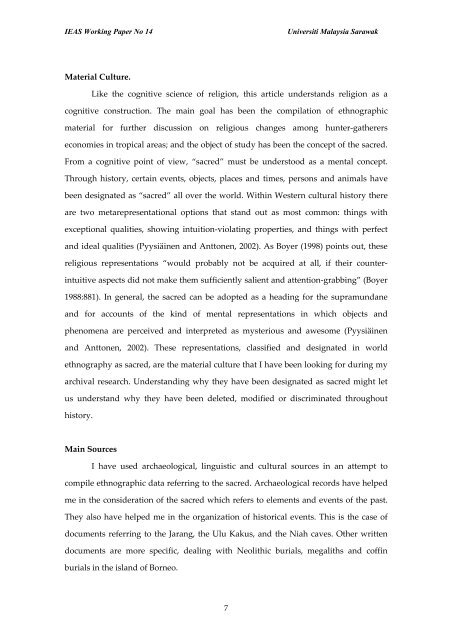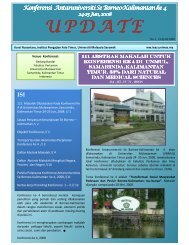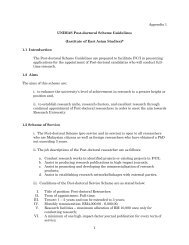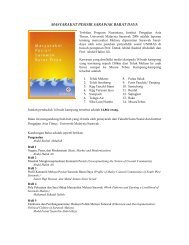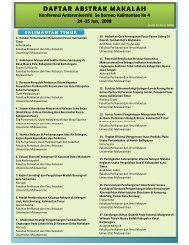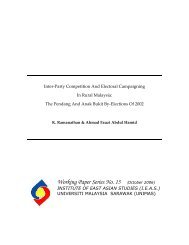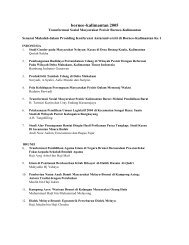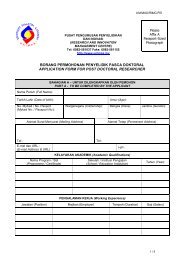Working Paper Series No. 14 - IEAS' Virtual Home - Universiti ...
Working Paper Series No. 14 - IEAS' Virtual Home - Universiti ...
Working Paper Series No. 14 - IEAS' Virtual Home - Universiti ...
Create successful ePaper yourself
Turn your PDF publications into a flip-book with our unique Google optimized e-Paper software.
IEAS <strong>Working</strong> <strong>Paper</strong> <strong>No</strong> <strong>14</strong><br />
<strong>Universiti</strong> Malaysia Sarawak<br />
Material Culture.<br />
Like the cognitive science of religion, this article understands religion as a<br />
cognitive construction. The main goal has been the compilation of ethnographic<br />
material for further discussion on religious changes among hunter-gatherers<br />
economies in tropical areas; and the object of study has been the concept of the sacred.<br />
From a cognitive point of view, “sacred” must be understood as a mental concept.<br />
Through history, certain events, objects, places and times, persons and animals have<br />
been designated as “sacred” all over the world. Within Western cultural history there<br />
are two metarepresentational options that stand out as most common: things with<br />
exceptional qualities, showing intuition-violating properties, and things with perfect<br />
and ideal qualities (Pyysiäinen and Anttonen, 2002). As Boyer (1998) points out, these<br />
religious representations “would probably not be acquired at all, if their counterintuitive<br />
aspects did not make them sufficiently salient and attention-grabbing” (Boyer<br />
1988:881). In general, the sacred can be adopted as a heading for the supramundane<br />
and for accounts of the kind of mental representations in which objects and<br />
phenomena are perceived and interpreted as mysterious and awesome (Pyysiäinen<br />
and Anttonen, 2002). These representations, classified and designated in world<br />
ethnography as sacred, are the material culture that I have been looking for during my<br />
archival research. Understanding why they have been designated as sacred might let<br />
us understand why they have been deleted, modified or discriminated throughout<br />
history.<br />
Main Sources<br />
I have used archaeological, linguistic and cultural sources in an attempt to<br />
compile ethnographic data referring to the sacred. Archaeological records have helped<br />
me in the consideration of the sacred which refers to elements and events of the past.<br />
They also have helped me in the organization of historical events. This is the case of<br />
documents referring to the Jarang, the Ulu Kakus, and the Niah caves. Other written<br />
documents are more specific, dealing with Neolithic burials, megaliths and coffin<br />
burials in the island of Borneo.<br />
7


